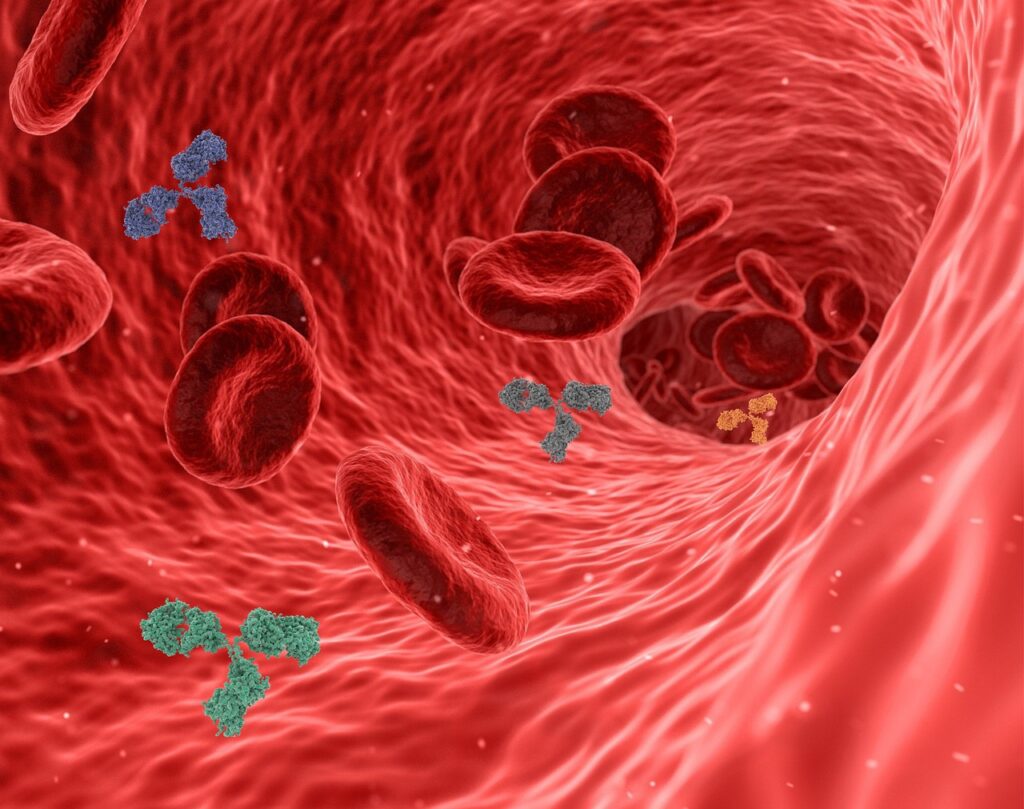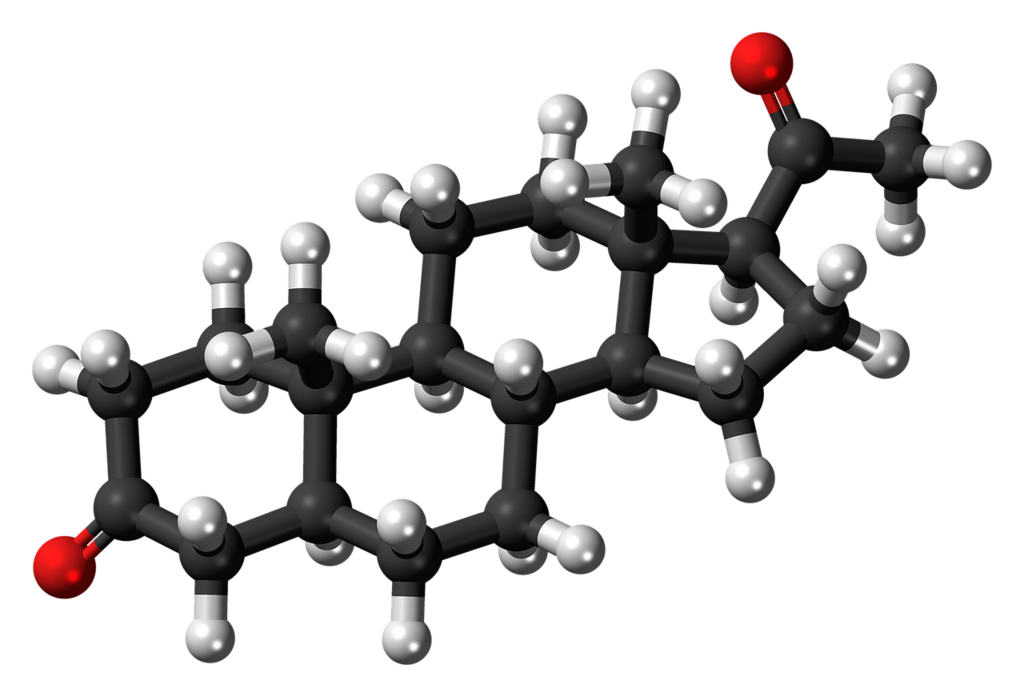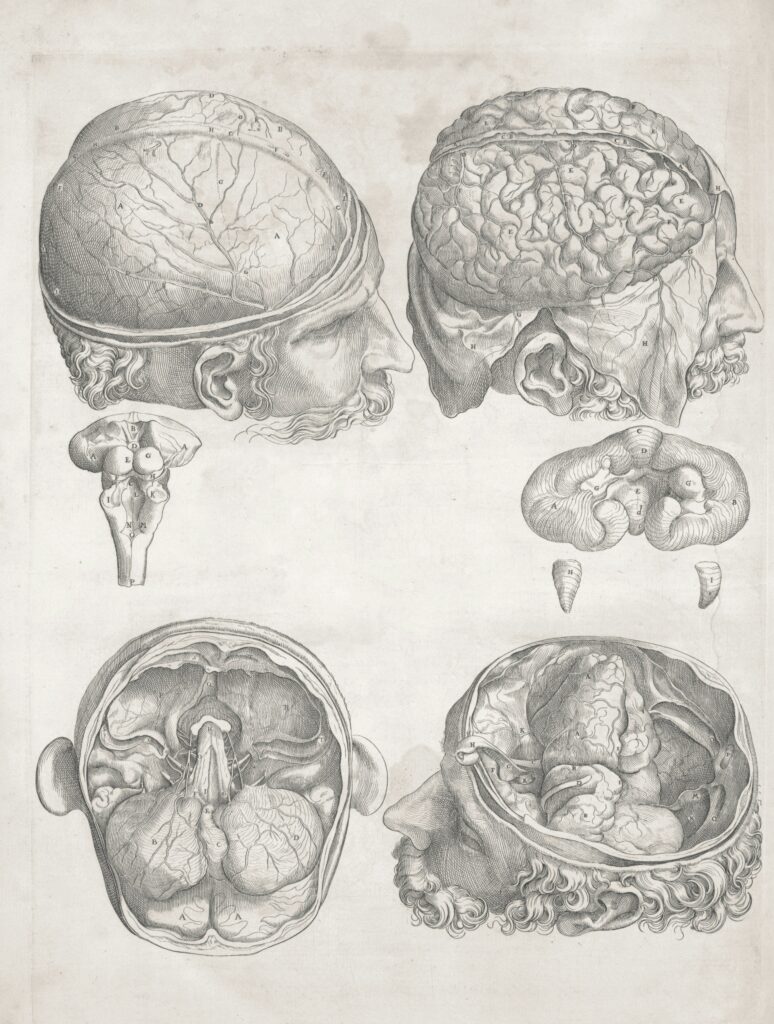Discover how biological optimization rewires your body for peak focus, energy, and long-term performance using cutting-edge biohacking systems.
You’ve heard the buzzwords—biohacking, cold plunges, wearables, peptides, Bryan Johnson.
Biological Optimization isn’t about living like a monk or becoming a full-time lab rat in your garage. It’s about taking back control of your biology with tactical, measurable upgrades that compound over time. This is system-level engineering applied to the human body. You’ve seen the sleep trackers, red light panels, ice baths, and custom supplement stacks. And if you’re here, chances are you’re already asking the right questions:
“How do I stay sharp as I age? How do I keep my energy levels high without depending on caffeine or stimulants? How do I recover faster, and train harder?“
You don’t want hacks—you want a playbook.
You want clarity. You want what works. Here’s the truth most people won’t tell you:
90% of biohacking content is disconnected from real performance.
Hacks without systems. Metrics without meaning. Expensive tools masking broken fundamentals.
At Hard Mode Health, we take a different approach.
We don’t chase fads. We build tactical humans.
Operators who treat their biology the way elite performers treat their craft: with precision, discipline, and relentless optimization. This isn’t about living longer just to live longer. This is about outpacing entropy—staying sharper, stronger, and more resilient as the years stack up. It’s about becoming resilient by design—physically, mentally, hormonally, and neurologically.
This is Biological Optimization.
It’s not a single hack—it’s a stacked protocol.
It means rebuilding your body’s internal systems from the ground up—your mitochondria, hormone pathways, neurotransmitters, cellular repair cycles—so your biology works for you, not against you.
No more guessing. No more generalized advice. This is about data-driven systems built for performance. If you’re looking for shortcuts, you’re in the wrong place. But if you’re ready to run on Hard Mode, let’s rewire your biology.
What Actually Drives Energy, Focus & Resilience

You ever notice how everything feels harder when you’re tired?
You snap at people you care about. You make sloppy decisions. You eat junk you said you wouldn’t.
Then you lie to yourself: “I’m just stressed.”
But let’s be honest. You weren’t just stressed.
You were weak, and not in the motivational-poster sense.
Biologically weak.
Your systems were out of sync.
Because when energy is low, your judgment follows.
Your brain starts favoring shortcuts—impulse over strategy, reactivity over logic.
And that’s not just anecdotal. That’s neuroscience.
When your prefrontal cortex—the part of your brain that handles focus, discipline, and rational thinking—is under-fueled, it goes offline. What takes over? The amygdala.
Your survival brain. The part wired for fight, flight, or freeze.
You don’t make smart decisions in that state. You make fast ones—usually the wrong ones.
And it’s not just your brain.
The rest of your internal machinery follows:
- Your mitochondria stop producing energy efficiently
- Your cortisol spikes, crushing testosterone and impairing recovery
- Your insulin response blunts, leading to fat gain and energy crashes
- Your inflammation rises, silently wrecking tissue and impairing cognition
So now you’re not just tired.
You’re stuck in a loop.
Slower. Fatter. Weaker. Moodier. Less adaptable.
And every time you say “I’ll push through it,” you’re reinforcing the dysfunction.
You’re running corrupted code on broken hardware.
But here’s the fix:
You don’t need more motivation.
You need to rebuild your core systems—the biological infrastructure that drives energy, clarity, power, and resilience.
This isn’t about 10-minute hacks.
This is about engineering your inputs—what you eat, how you move, when you recover, how you sleep, what you expose your body to—so your internal operating system runs clean.
Because when your biology works, everything else gets easier:
- You think faster.
- You train harder.
- You recover quicker.
- You stay calm under pressure.
- You actually enjoy pushing yourself to the limits.
The 5 Core Systems You Must Master

So how do you go from reactive, out of it, and drained—to calm, sharp, and in command?
The answer isn’t more caffeine, more productivity apps, or another motivational podcast.
It’s not about “doing more”—it’s about running cleaner.
This is where Biological Optimization comes in.
Not a buzzword. Not a trend. But a systematic method to take back control of your physiology by targeting the five core systems that drive your energy, focus, and resilience:
- Mitochondrial Power
- Hormonal Signaling
- Neurochemical Balance
- Sleep Architecture
- Nervous System Control
Optimize these five, and the rest becomes automatic:
- You wake up clear instead of groggy
- You train with purpose, not just discipline
- You recover faster, think sharper, and stay stable under pressure
At Hard Mode Health, this isn’t about perfection or aesthetics.
It’s about becoming battle-ready & adaptive—mentally, physically, and emotionally.
We treat the body like a high-performance system with inputs, outputs, stress tests, and performance metrics.
And if you’re ready to stop running on fumes—
To crank your routines, systems, and protocols to hard mode—
Then it’s time to get tactical.
You don’t need 30 gadgets or $10,000 worth of peptides to start optimizing your biology.
What you need is a systems-first approach—the same blueprint high performers, elite soldiers, and cutting-edge longevity experts are using to rewire their bodies for energy, clarity, and resilience.
Because it doesn’t matter if you’re a millionaire or not—those who take their health seriously are seeing results either way.
On one end, you’ve got people like Bryan Johnson, investing millions to shave years off his biological age with full-time medical teams and next-gen protocols. But on the other end, you have everyday bio-optimizers like Dave Pascoe—a 62-year-old engineer who’s used sleep, nutrition, light, and movement to cut his biological age by over a decade. No luxury clinic. No crazy budget. Just relentless consistency and a smart protocol stack.
The common thread? A tactical mindset.
You either treat your biology like a liability—or like your most valuable asset.
The difference starts with what you choose to focus on.
Because once you know which systems drive aging, energy, and resilience—you can stop guessing and start building.
Whether it’s Bryan Johnson, spending millions to push back biological time, or Dave Pascoe, using simple, consistent protocols to outperform his age—the focus is the same:
Target the systems that govern aging, energy, and strength.
Here’s what they’re targeting—and what you can start optimizing right now.
1. Mitochondrial Power

At 30, something inside you begins to shift—but it’s almost imperceptible at first.
There’s no warning signal, no dramatic breakdown. Just a quiet change at the cellular level. Your mitochondria—the microscopic power plants in every one of your cells—begin to slow down. These structures convert oxygen and nutrients into ATP, the raw energy that fuels everything from muscle contractions to memory. After age 30, that energy-generating capacity drops by roughly 8% every decade. You won’t feel it overnight. But over time, you will.
You start noticing it in the margins. You feel slower getting going in the morning. Your focus isn’t as locked in—your mind wanders more. Workouts feel heavier than they should. Recovery that used to take hours now drags into days. You’re still showing up, still pushing—but it feels like you’re driving with the parking brake on. You sleep, eat clean, do everything “right,” but there’s a missing gear you can’t quite reach anymore.
This is what mitochondrial decline looks like. Not in a lab, but in real life. It’s your internal energy systems losing efficiency. Less ATP means less output—physically, mentally, hormonally. Your body has to work harder to do the same things it used to do effortlessly. And if you don’t step in to reverse that decay, it compounds. Slowly at first. Then all at once.
- 🧬 A 2020 review in Nature Reviews Molecular Cell Biology linked mitochondrial dysfunction to nearly every age-related disease, from Alzheimer’s and Parkinson’s to Type 2 diabetes and cardiovascular decline.
- 🔬 Research in Cell Metabolism confirmed that unless you intervene, mitochondrial capacity continues to erode decade after decade.
If you’ve been feeling like something’s just… off lately—this is likely where it starts.
If you don’t take action now, you might not notice how far your edge slips—until it’s already gone.
But here’s the good news—your mitochondria aren’t fixed in place.
Unlike bone density or joint wear, mitochondrial function is highly trainable. You can build it back, expand its capacity, and even push it beyond what you had in your 20s. Elite athletes, longevity researchers, and performance-driven biohackers are doing exactly that—treating mitochondrial health not as an afterthought, but as a central pillar of energy, endurance, and longevity.
Their protocols aren’t guesswork. They’re built around measurable, research-backed tools that stimulate mitochondrial biogenesis and repair.
How You Can Rebuild Your Mitochondrial Capacity

The decline isn’t inevitable—but the rebuild won’t happen on its own.
Top-tier performers don’t wait to feel worse. They get ahead of the curve.
They use strategic, targeted interventions to trigger mitochondrial biogenesis—the process by which your body builds new, stronger mitochondria from scratch. It’s not about hacking your way around fatigue. It’s about upgrading your energy system at the cellular level so that fatigue stops showing up in the first place.
This is what the best in the world are doing—athletes chasing peak output, operators running high-stakes schedules, and bio-optimizers who’ve made vitality their full-time mission:
Low-intensity Aerobic Training Zone 2 Cardio (5x per week, 45–60 min)
Low-intensity aerobic training (like incline walking or cycling at a conversational pace) has been shown to increase mitochondrial quantity and efficiency. Think of it as your cellular base-building—slow, steady, and essential.
This is your foundation. Sustained, low-intensity movement (like incline treadmill walking, or cycling at 60–70% of your max heart rate) has been proven to increase mitochondrial volume and efficiency.
🔬 Endurance training has been shown to upregulate PGC-1α, the master regulator of mitochondrial biogenesis.
→ Study: Cell Metabolism, 2018 – Exercise Training Increases Mitochondrial Content
→ Used by: Dr. Peter Attia prescribes 3–5 hours of Zone 2 per week in his “Centenarian Decathlon” protocol.
Red & Near-Infrared Light Therapy (daily, 10–20 min)
Used by elite recovery labs and cutting-edge clinics, red and near-infrared light penetrate deep into tissue to activate cytochrome c oxidase, enhancing ATP production. The result? Faster recovery, better cognitive output, and improved mitochondrial signaling.
🔬 One study showed ATP production increased by up to 42% with consistent red light exposure.
→ Study: Photomedicine and Laser Surgery, 2009 – Red/NIR light increases ATP production
→ Used by: Bryan Johnson incorporates daily full-body red light exposure as part of his Blueprint protocol.
→ Habit: 10–20 minutes per day, ideally in the morning or post-workout, 6–12 inches from the device.
Cold Exposure (3–5x per week, 2–3 min in 50–59°F / 10–15°C water)
Cold plunges in a fasted state activate mitochondrial stress responses—specifically, uncoupling proteins (UCPs) that force mitochondria to become more efficient under load. Regular exposure builds resilience and expands your system’s output ceiling.
When done fasted, cold exposure triggers mitochondrial uncoupling, forces adaptation, and builds metabolic flexibility.
🔬 Cold thermogenesis activates PGC-1α and increases mitochondrial biogenesis in brown adipose tissue.
→ Study: Journal of Applied Physiology, 2015 – Cold exposure increases mitochondrial biogenesis
→ Used by: Wim Hof, Andrew Huberman, and elite MMA fighters including Georges St-Pierre.
→ Habit: 2–3 minutes post-wake, fasted, with progressive tolerance building weekly.
Strength Training (3–4x per week, full-body, compound focus)
Strength work doesn’t just build muscle—it triggers mitophagy, clearing out weak, inefficient mitochondria to make space for stronger ones. Compound lifts under heavy load have been shown to increase mitochondrial density and metabolic efficiency.
Deadlifts, squats, presses, and pulls don’t just build muscle—they induce mitophagy, clearing damaged mitochondria and increasing density.
🔬 Resistance training increases mitochondrial content and improves insulin sensitivity.
→ Study: European Journal of Applied Physiology, 2020 – RT increases mitochondrial capacity in older adults
→ Used by: Dr. Gabrielle Lyon emphasizes “muscle-centric medicine” for aging and metabolic health.
→ Habit: 45–60 minutes, 3–4 days/week, emphasizing progressive overload and full recovery.
Deep Sleep Optimization (nightly, 7.5–9 hrs, with tracking)
Mitochondrial repair ramps up during slow-wave sleep. No recovery tool can replace this. High performers treat sleep like a training variable—tracking deep sleep, managing blue light, and using supplements like magnesium, glycine, or low-dose melatonin to support mitochondrial regeneration.
How to Prepare Your Body for Deep Sleep
- Block blue light 2 hours before bed.
- 300–500 mg magnesium glycinate + 3g glycine before sleep.
- Keep bedroom under 68°F.
- No late meals or alcohol.
These aren’t one-off tactics. They’re part of a daily, deliberate protocol.
From Bryan Johnson’s $2 million-a-year blueprint to what world-class athletes and forward-thinking longevity doctors are applying in clinics today—this is how modern energy systems are being rebuilt.
Most people don’t realize they’re losing energy—until it’s too late.
Mitochondrial decay happens slowly and silently, chipping away at your capacity to think, move, and perform. If you’re not actively training your mitochondria, you’re surrendering your energy ceiling day by day. In biological optimization, energy isn’t optional—it’s everything.
The sooner you start taking care of your mitochondria, the more energy you’ll have to power through each day.
2. Hormonal Signalling

Understanding how your hormones communicate and adapt empowers you to take control—so you’re not stuck feeling tired, foggy, or weak. When hormonal signaling is optimized, it boosts your energy, sharpens mental focus, and accelerates recovery, helping you perform at your peak every day.
Today’s biohackers and high performers use precise, time-tested strategies to optimize key hormones like testosterone, growth hormone, DHEA, insulin, thyroid hormones, and melatonin. These aren’t vague wellness concepts—they’re critical biological levers for peak performance. Techniques like cold exposure, fasted training, strategic carbohydrate timing, sunlight exposure, targeted micronutrients, optimized sleep cycles, and supplementation fine-tune the timing and amplitude of hormone release. The result? Increased strength, enhanced cognition, faster recovery, and slowed aging.
The competitive edge isn’t about doing more—it’s about syncing smarter. Tactical recovery, nutrient timing, and circadian alignment are now essential in high-performance protocols. Optimizing insulin goes beyond blood sugar control—it preserves mental clarity and lean muscle mass. Supporting thyroid function isn’t just for weight management—it’s vital for cognitive drive. When these systems are aligned, you’re not only feeling better—you’re extending your functional lifespan.
This is hormonal optimization at its core: sending the right signal, at the right time, in the right dose. Your biology is listening. Biohackers have simply learned how to speak its language. Next, we’ll break down the key hormones high performers target—and how each one shapes strength, focus, and recovery.
Testosterone (Strength, Drive, and Metabolic Efficiency)
Testosterone is more than muscle—it’s a master regulator of motivation, recovery, and metabolic resilience. Low testosterone correlates with fatigue, muscle loss, increased visceral fat, and decreased mental clarity or ambition. Natural optimization includes strength training (especially compound lifts), cholesterol-rich foods (eggs, shellfish), and micronutrients like zinc, magnesium, and vitamin D.
What it does:
Testosterone fuels physical and mental resilience—boosting strength, drive, and recovery.
How it’s optimized:
- Heavy compound lifts (squats, deadlifts) to naturally spike testosterone
- Adequate intake of cholesterol-rich foods to support hormone synthesis
- Supplementation of zinc, magnesium, and vitamin D for hormonal balance
Testosterone doesn’t just help you feel strong—it helps you be strong. Though levels decline with age, lifestyle factors wield powerful control over this process. Optimize your inputs, and your body responds with more energy, resilience, and mental sharpness.
DHEA (Stress Resilience & Hormonal Flexibility)
Dehydroepiandrosterone (DHEA) is an often-overlooked hormone that acts as a reserve for producing testosterone and estrogen. It buffers stress by balancing cortisol and supports immune function, mood, and hormonal flexibility. DHEA declines with age and chronic stress.
What it does:
DHEA helps your body adapt to stress, maintaining balance and hormonal reserve.
How it’s optimized:
- 7-Keto DHEA supplementation to boost metabolism without hormonal conversion
- Rhodiola Rosea to improve stress hormone balance
- Resistance training and healthy fats paired with good recovery and sleep
Simple lifestyle inputs can keep this critical hormone active, improving stress handling and recovery.
Growth Hormone (Repair, Recovery & Fat Metabolism)
Growth hormone (GH) repairs tissues, supports fat burning, and promotes deep restorative sleep. It’s released in bursts during deep sleep, intense exercise, and fasting.
What it does:
GH acts as a repair crew, accelerating recovery and fat metabolism.
How it’s optimized:
- Glycine supplementation to increase GH release and improve sleep
- Intermittent fasting to boost GH by modulating insulin and hunger hormones
Supporting GH means aligning with natural rhythms to unlock better recovery and vitality.
Thyroid Hormones (Metabolism & Mental Sharpness)
Thyroid hormones regulate metabolic rate and brain function. Low thyroid activity causes fatigue, brain fog, cold sensitivity, and weight gain, often triggered by stress, nutrient deficiencies, or calorie restriction.
What it does:
Thyroid hormones are your body’s gas pedal—governing energy burn and mental clarity.
How it’s optimized:
- Ashwagandha to lower stress and support thyroid balance
- Iodine and selenium from foods like seaweed, Brazil nuts, and seafood to fuel thyroid function
Optimizing thyroid health restores metabolic drive and cognitive performance.
Insulin (Energy Use, Fat Storage & Cognition)
Insulin regulates nutrient use—directing fuel for energy or storage. Insulin resistance leads to fat gain, energy crashes, and brain fog, accelerating aging.
What it does:
Insulin manages glucose uptake, impacting energy, body composition, and focus.
How it’s optimized:
- Berberine to enhance insulin sensitivity
- Ceylon cinnamon to lower post-meal blood sugar
- Alpha-Lipoic Acid (ALA) to support clean energy and insulin function
- Cardio and strength training to improve muscle glucose uptake
- Smart carb timing to maintain metabolic flexibility
Optimized insulin means steady energy, leaner body composition, and better long-term health.
Melatonin (Circadian Alignment & Cellular Repair)
Melatonin governs circadian rhythm, signaling your body to slow down and repair. Disrupted melatonin cycles cause poor recovery and daytime fatigue.
What it does:
Melatonin is a repair hormone—facilitating mitochondrial cleanup, DNA repair, and deep sleep.
How it’s optimized:
- Low-dose melatonin micro-dosing to fall asleep without grogginess
- L-Theanine and magnesium glycinate to activate parasympathetic relaxation
- Glycine to support serotonin and melatonin pathways naturally
Circadian alignment through melatonin optimization is foundational for deep recovery and longevity.
Hormonal systems respond to consistent patterns, not perfection. Misaligned inputs stall progress; aligned inputs accelerate it—leading to sharper focus, stronger output, and deeper recovery. Studies show that restoring circadian alignment alone can improve testosterone, growth hormone, and insulin sensitivity in weeks. Precision beats effort when you work with your biology, not against it.
3. Neurotransmitter Balance

Your brain runs on chemistry, not just willpower.
When neurotransmitters are firing in sync, you feel sharp, focused, and emotionally steady. When they’re off—even slightly—your thoughts get scattered, motivation dips, and stress hits harder than it should.
This isn’t burnout or laziness. It’s a signal your brain’s messaging system needs tuning.
The Brain Chemicals Behind Focus & Drive
- Dopamine drives motivation, reward, and attention.
- Serotonin regulates mood, confidence, and emotional resilience.
- GABA calms the system and promotes deep recovery.
- Acetylcholine handles learning speed, memory, and task switching.
An article published in Frontiers in Neuroscience (2020) showed that dopamine imbalance alone can cause impulsivity, procrastination, and low drive—conditions often mistaken for poor discipline.
In other words: You don’t need a pharmacy. You need precision.
Starting with dopamine. If you’re constantly chasing cheap hits—scrolling TikTok, snacking between tasks, or scrolling on your phone late at night—you’re training your brain to expect rewards without effort. That kills drive. The elite do the opposite: they delay gratification, letting dopamine build naturally through challenge and progress. This builds resilience, motivation, and long-term focus. Every time you resist the quick fix, you strengthen the system.
Supplementation can help—but only when targeted. L-Tyrosine supports dopamine production, especially under stress or sleep debt. Rhodiola Rosea boosts stamina without overstimulation, keeping your brain online when pressure spikes. Ginkgo Biloba improves blood flow to the brain—more oxygen, faster recall, better output.
If you’re leaning on caffeine all day, you’re not optimizing—you’re masking. Too much, and your brain stops responding. You don’t get sharper—you just get twitchy. Instead of reaching for another coffee, try a glass of water with sea salt and lemon. The sodium and trace minerals help restore electrolyte balance, support nerve signaling, and keep your brain firing without the crash. Stay sharp. Stay steady. Not wired and wrecked.
This is biochemical discipline. You’re not chasing stimulation. You’re engineering performance.
4. High-Quality Sleep

The most underrated biohack in the game—because most people are doing it wrong.
Forget “just get 8 hours.” That’s junk advice if those hours are filled with wakeups, light pollution, or hormonal chaos. Optimized sleep isn’t about clocking time. It’s about engineering quality—because this is when the deepest recovery happens.
In deep sleep, your body releases growth hormone, clears cellular waste through the glymphatic system, and triggers mitochondrial repair. REM handles memory, mood, and neural reorganization. Miss these stages, and you miss the upgrade.
👤 The difference? High performers treat sleep like training—quantified, tracked, and dialed in.
🔬 The Science
- A study in The Lancet Psychiatry found that disrupted circadian rhythms increased the risk of mood disorders by 37% and cognitive decline by 30%.
- Research from Satchin Panda at the Salk Institute shows that just one hour of shifted sleep timing can throw off insulin sensitivity, cortisol balance, and gene expression tied to metabolism.
Poor sleep decreases testosterone, weakens glucose regulation, and blunts recovery—even if total time in bed is the same.
Stop leaving your sleep to chance.
If you want to wake up ready to dominate—not just survive—you need to engineer your sleep like a system. Here’s how you do it:
1. Light Timing as a Hormonal Lever
Your circadian rhythm isn’t just about sleep—it’s the master switch for hormone release, metabolism, and brain function.
→ Morning sunlight within 30 minutes of waking helps anchor melatonin and cortisol rhythm.
→ Blue light blockers (amber glasses or app filters) are worn 2 hours before bed to avoid melatonin suppression.
2. Environment: Cold, Dark, Tech-Free
→ Ideal sleep temperature is 60–67°F.
→ Total darkness = maximal melatonin output (use blackout curtains + eye mask).
→ EMF and WiFi are cut at night in top biohacking routines (Johnson, Asprey, et al).
3. Nutrient Support Protocol (30–60 min before bed):
- 300–400mg Magnesium Glycinate – for parasympathetic activation.
- 3g Glycine – shown to reduce sleep latency and improve deep sleep.
- Low-dose GABA / L-Theanine – optional stack for lowering pre-bed cortisol.
🔬 Journal of Clinical Sleep Medicine (2012): Glycine before bed improved subjective sleep quality and shortened time to fall asleep.
Sleep is your most overlooked performance enhancer. It doesn’t just support progress—it governs it. You can lift hard, eat clean, and take every supplement in the world—but if your sleep’s off, you’re leaving gains on the table.
The goal? Train your body to recover on command.
Not once in a while. Night after night. Like clockwork.
That means creating a sleep system so dialed-in, your body knows it’s time to repair the moment your head hits the pillow.
No more hoping for rest—just results.
5. Nervous System Control

Your body only knows two operating systems:
Sympathetic — fight or flight.
Parasympathetic — rest, digest, rebuild.
There’s a reason even elite bodybuilders—guys who can deadlift 600 pounds—sometimes get wrecked by a workout they’ve done a hundred times before.
It’s not their muscles that fail.
It’s their nervous system.
When your central nervous system (CNS) is overloaded—whether by heavy lifting, chronic stress, poor sleep, or nonstop stimulation—your body hits the brakes. Strength plummets. Reaction time slows. Motivation disappears. Your body won’t let you push harder because it knows you can’t recover.
But this isn’t just a gym problem.
Most people live in sympathetic mode without even knowing it.
You wake up to an alarm. Chug caffeine. Rush through traffic. Sit under fluorescent lights. React to messages. Skip meals. Sleep late. Repeat.
All of it tells your nervous system: “Danger. Stay alert.”
And that command comes at a cost.
You’re not healing. You’re not recovering. You’re not adapting.
How do you measure this invisible stress?
Invisible stress doesn’t wait for you to notice it—it builds silently, wrecking your recovery and burning your energy reserves. The key to catching it? Heart Rate Variability (HRV). This isn’t just your heart rate. It’s the tiny gaps between each beat—the milliseconds your nervous system tweaks to handle stress and recovery. A high HRV means your body’s adaptive, ready to flip the switch between grind mode and rest mode without missing a beat.
Low HRV? That’s your warning light. Your system is stuck running hot, stuck in fight-or-flight, unable to reset. This hidden overload crushes focus, drains strength, and speeds burnout. Tracking HRV gives you real-time intel on your body’s stress load so you can dial back hard when you need to and push when you’re ready.
The Science Behind HRV & Stress Reset
- A 2021 study in the European Heart Journal found that low HRV is linked to reduced longevity, impaired recovery, and increased disease risk.
- Harvard Medical School reported that five minutes of breathwork can reduce sympathetic activity and cortisol levels significantly—resetting the nervous system.
What Happens When You’re Stuck in Overdrive:
- Your sleep looks fine on paper—but it’s not restorative.
- Muscles don’t repair or grow—they stay inflamed.
- Libido, testosterone, and drive crash.
- Brain fatigue and anxiety creep in—and don’t leave.
- You’re wired by morning and wrecked by mid-afternoon.
Most people don’t realize this is a nervous system malfunction—not a motivation issue.
What You Can Do to Balance Your Nervous System
Track HRV Daily
Heart Rate Variability (HRV) is your nervous system’s dashboard. A high HRV means your body is recovered, adaptable, and ready for a challenge. A low HRV? That’s your warning light—showing signs of stress, poor sleep, or overtraining.
Use it to your advantage.
When your HRV is high in the morning, take it as a green light—schedule your hardest training, deep work, or high-stress tasks. When it’s low, pull back: shift to recovery protocols like Zone 2 cardio, sauna, mobility work, or deep breathing. You’re not being soft—you’re being strategic.
Using Tactical Breathwork
Your breath is not just automatic—it’s programmable. With the right protocols, you can shift your nervous system in real time. Feeling wired or anxious? Do a few physiological sighs—two quick inhales through the nose, one long exhale through the mouth. It’s proven to reduce cortisol and calm your system in under a minute.
Need to stay composed in high-stress situations? Use box breathing: inhale for 4 seconds, hold for 4, exhale for 4, hold for 4. Navy SEALs use it to stay sharp under pressure. So can you.
Mind spinning or mood unstable? Try alternate nostril breathing. It balances the hemispheres of the brain and brings focus back online fast. These aren’t spiritual rituals. They’re biological levers—tools to command your nervous system instead of being at its mercy.
Train them daily. Deploy them when it counts.
Triggering the Parasympathetic System
You can’t just relax your way to calm—you have to train your body to switch off stress and turn on recovery. A simple way to do this is with Zone 2 cardio: 45 minutes of easy movement like brisk walking uphill, light cycling, or rucking—at a pace where you can still hold a conversation without gasping for air.
This kind of exercise boosts your vagal tone, which is how well your body’s “rest and digest” system works. The vagus nerve controls your heart rate and helps calm down stress responses. When your vagal tone is strong, your heart rate variability (HRV) improves—this is a good sign your nervous system can smoothly shift between stress and calm.
Better vagal tone means you recover faster, feel less stressed, have less inflammation, digest food better, and think more clearly. Doing Zone 2 cardio regularly trains your body to handle stress better and keeps your nervous system balanced for the long haul.
Eliminate Decision Fatigue
High performers build systems. Not just for productivity—but to protect cognitive bandwidth and reduce stress input.
Systems > willpower. Every time.
Your nervous system is the control tower for everything—energy, attention, emotion, even digestion. If you don’t learn how to regulate it, life will regulate it for you—through stress, burnout, and instability. The more choices you make, the weaker your brain becomes. That’s not opinion—it’s neuroscience.
Every small decision—what to wear, when to train, what to eat—taxes your prefrontal cortex. When it’s fried, discipline fails. You react instead of respond. Stress creeps in unnoticed. High performers know this. So they don’t rely on willpower—they engineer their environments.
- Same meals, different days.
- Same wake time, seven days a week.
- Pre-set training windows.
- Tech boundaries built in.
The goal? Fewer decisions. More clarity. You’re not trying to optimize every variable. You’re trying to create defaults that run without friction. Systemize the mundane so your nervous system has fewer threats to manage—and your brain is free to focus on what actually matters.
Your Baseline for Peak Performance

Biological Optimization isn’t about chasing every shiny tool. It’s about targeting the 5 systems that drive everything else:
✅ Mitochondria
✅ Hormones
✅ Neurotransmitters
✅ Sleep architecture
✅ Nervous system balance
These are what elite performers optimize first—because when they’re dialed in, everything else gets easier.
This is the operating system of a high-functioning human.
Miss the foundation, and no amount of hacks will save you.
But this is just the beginning.
What you’ve just read is the baseline.
At Hard Mode Health, we’re not here to entertain—we’re here to equip.
We’ll be going deeper into each of these core systems with detailed guides, real-world protocols, and emerging research on the cutting edge of human performance.
If it works, we break it down. If it’s noise, we cut it out.
Bookmark the site. And stay connected—because the next evolution of strength, energy, and resilience is already in motion.
You’ve just taken your first step toward becoming a tactical human—and we’re just getting started.
Welcome to Hard Mode.